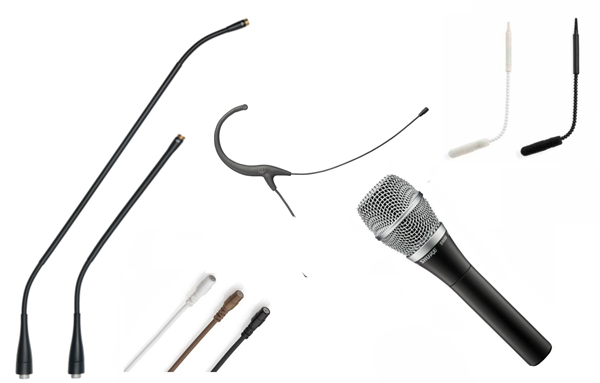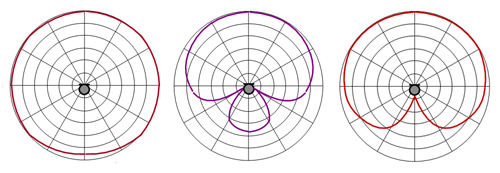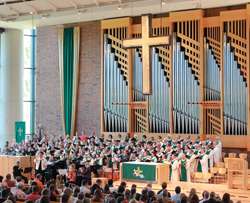A church service is a dynamic, multifaceted event combining spoken word from experienced and inexperienced speakers (“talkers”), solo vocalists, choirs, bands ranging from mellow to rock levels, and responses from the congregation. Though the program is typically consistent from week to week, new variations arise, ranging from a holiday pageant to a business meeting.
The primary goal of the service is to engage the congregation in the worship experience through word and music. To help achieve this, the audio system must be as transparent as possible.
What the congregation hears begins with the microphones. If the audio sources aren’t captured with sufficient level and clarity, everything else in the system is playing catch-up.
Let’s take a look at miking options and approaches for the variety of sources involved in typical church services.
Pivot Point
The pastor is the key person (and therefore audio source) in a typical service. Choosing the best mic and finding the optimal placement relative to the pastor’s mouth will make the difference between comfortable listening and straining to hear – and between having headroom in the system and riding the fader on the edge of feedback.

Since most pastors need their hands free, the most common choices are a gooseneck pulpit/podium mic, a lavalier, or a headset. Each has its own characteristics and benefits. When the presenter is in a relatively fixed position and using notes, a pulpit mic does a decent job in capturing the voice with sufficient level, especially when the person takes the time to adjust the mic position and doesn’t stand too far away.
Lavalier mics keep the hands free and the face unencumbered, and often have a shaped frequency response to compensate for “chest resonance” and the off-axis loss of the voice’s higher frequencies. Yet sometimes it’s difficult in live settings to achieve a full frequency response and sufficient level.
Lavs with omnidirectional polar patterns typically generate less noise from clothing, cable movement, and handling, and pick up sound sources relatively equally from all directions. Positioning is less critical than with a more directional pattern, and head turns aren’t as likely to result in significant drops in level or changes in frequency response. But the lack of directionality makes it harder to keep their pattern away from the loudspeakers, which can lead to feedback.
Directional lavs provide greater isolation along with the potential of more handling noise and heightened sensitivity to breath and plosive sounds. Additionally, the user’s movements need to be more consistent so that the head doesn’t dramatically move away from the pickup pattern and change the output level.

If the pastor is amenable, a headset mic is a more reliable choice, and the frequency response is invariably better for a live setting. Steve Diamond, co-founder and acoustics consultant at AGI Professional in Eugene, OR, notes that he recommends headsets in almost all cases due to their consistency and better frequency response in live settings.
Headset mics provide considerably greater gain before feedback, more natural voice quality with full frequency response, and more consistent audio level with movement. Place the element toward the corner of the mouth but out of the direct line of the voice to minimize breath noise and consonant pops, and use the provided windscreen.
Headsets with single- and dual-ear mounting are readily available, with some of the single-ear units I’ve tried providing sufficient hold for active movement, and staying in place when putting on reading glasses. Boom length on many models can be user-adjusted for optimal positioning, and shaped to fit the curve of the face.




















